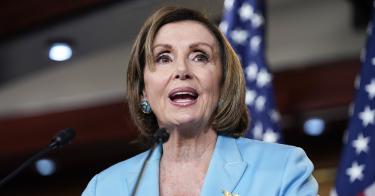Last week the Supreme Court rejected a third legal challenge to the Affordable Care Act (also called Obamacare) on the grounds that the plaintiffs—several individuals and states—lacked “standing.”
Standing is the requirement that someone has suffered real and remediable harm as a result of someone else’s conduct before they can bring a lawsuit. The media frequently refers to it as a “technicality” or describes it as a “punt” when the Court dismisses a case for lack of standing. But standing is not a technicality. It’s one of the most important issues a federal court decides in a case, and it’s essential that courts—especially the Supreme Court—get it right.
Unfortunately, the Supreme Court has not gotten it right, and that is causing some significant problems for the courts, for litigants, and for our constitutional balance of powers.
When we talk about standing, we’re talking about two related things: 1) the abstract requirement that a party must suffer harm before it can bring a lawsuit, and 2) the caselaw about standing, which sets the rules that courts apply to determine whether someone has suffered harm.
>>> In Third Obamacare Decision, Supreme Court Doesn’t Decide Whether Its Constitutional
Standing, in the abstract, is one way the Constitution limits the judiciary’s power. Article III says that “the judicial Power” extends only to “cases” and “controversies.” For a case or controversy to exist, someone must have been harmed by someone else’s unlawful conduct. This limitation prevents the courts from turning into what Justice Byron White called “roving commissions assigned to pass judgment on the validity of the Nation’s laws.”
In short, standing keeps courts in their constitutional lane.
Standing also has important implications for people seeking access to the justice system, because if someone lacks standing, the courthouse doors are closed to him.
The caselaw about standing creates rules that determine when the doors are open and when they are shut. If the rules are too lax, courts will slip their constraints and act without authority. If the rules are too strict, people who need justice won’t be able to get it.
At a casual glance, the Supreme Court’s standing caselaw seems to strike a clear and workable balance. To have standing, a would-be plaintiff has to show a “concrete and particularized” injury that is “fairly traceable” to the defendant’s conduct and that is likely be to ameliorated by a favorable ruling. But if you dig down a little deeper, you’ll find that the standing rules are unworkable and unpredictable.
The Court has riddled these rules with inconsistently applied exceptions and has also applied shifting definitions to the words of the rules.
We got a good look at that in last week’s Affordable Care Act case. There, the Supreme Court said that Texas and other states that sued to invalidate the law’s individual mandate (the provision that required all Americans to buy health insurance) lacked standing in part because their harm was speculative. The states argued that the mandate caused more people to enroll in state-operated insurance programs, which increased the states’ costs. The Court said that this was too speculative to establish standing because the states provided insufficient evidence that the mandate caused people to enroll in those programs.
Contrast that holding to another one, Department of Commerce v. New York, where the Court held that the Trump Administration could not reinstate a citizenship question on the census. In that case, New York said it had standing to challenge the administration’s plan to add a citizenship question to the census because the question might cause some residents to avoid the census, which might lead to a sufficient decrease in the state’s reported population to cause the state to lose seats in the House of Representatives. That was not too speculative for the Court, which decided the case on the merits.
It is difficult to reconcile those two cases. The Court tried to do so by saying that Department of Commerce v. New York involved a more “predictable” chain of events, but that explanation is merely the circular substitution of one vague term, “speculative,” for another, “predictable.”
If it is difficult to reconcile just two cases, it becomes impossible to do so with scores of cases where the Supreme Court has played with the vagueness of words like “speculative,” “concrete,” and “fairly traceable.”
Why is this a problem? Well for one, pliable rules don’t keep the courts within their constitutional lane. For another, people cannot reasonably predict whether the courthouse doors will be open to them.
But just as important, infinitely flexible rules allow judges to pick and choose outcomes in cases without looking like they’re doing that.
For example, suppose you’re a judge and have made up your mind that you want to uphold the Affordable Care Act, but you don’t want to be accused of picking sides on a politically fraught issue. You can effectively uphold the Affordable Care Act by saying that courthouse doors are closed to the law’s challengers. This insulates you from accusations of partisanship because the media will say you dismissed the case on a “technicality.”
On the other hand, imagine you’re a judge who is determined to use your power to advance your political agenda, and your agenda includes opposing a citizenship question on the census. Any injury that a citizenship question causes must be concrete, particularized, and fairly traceable, but if you can distill all of those requirements into the infinitely flexible phrase “not speculative,” you can open the courthouse doors to any challenger you want.
In the simplest of terms, if the standing rules are malleable, then they don’t stop courts from becoming roving commissions passing judgment on whatever laws they want.
>>> Obamacare’s Side Effects: Higher Costs, Lower Choices
That is the danger we are in now with the Court’s present standing caselaw. The very rules meant to restrain the courts’ power have become their license to extend it.
Justices Clarence Thomas and Elena Kagan made similar observations in their dissenting opinions in TransUnion v. Ramirez, where the Court held that a violation of a legal right alone does not create standing. Thomas noted that by narrowly defining “harm” to exclude violations of legal rights the Court curtailed Congress’s power to define legal rights and so closed the courthouse doors when Congress intended them to be open. Kagan wrote that although standing is supposed to be “an integral aspect of judicial restraint,” the Court transformed it “into a tool of judicial aggrandizement.”
What to do about this?
At present, the Court’s standing caselaw is an amorphous agglomeration of rules, exceptions, and vagaries whose foundation in the Constitution has been buried under its bulk and lost. The Court ought to rebuild the entire edifice from the Constitution up.
Luckily for the Justices, the intellectual work has already been started. Numerous academics and judges, notably Justice Thomas and Judge Kevin Newsom of the Eleventh Circuit, have begun to put serious thought into designing this new edifice. The Supreme Court does not need to start from scratch, but it does need to start.
This piece originally appeared in The Federalist Society




